I am a history nut.
My family traces its German lineage back to 1265, and my Church comes from a branch of the Christian family tree that joyfully embraces our heritage, rooting back to the times of the Reformation (1500’s) and beyond.
So yeah, I like old stuff.
This is one of the reasons that I met and fell in love with Bibles published by Cambridge. Besides being on the front lines of the world’s highest quality Bibles today, Cambridge also has the distinction of being the world’s oldest continuous Bible producer, having begun in the year 1591. It is a delight to my hands and heart to hold a Bible made by a press house that predates the King James Bible of 1611.
Think about that!
When you purchase a Cambridge Bible today, you receive a small certification that reads as follows,
“Cambridge University Press is the oldest Printer and Publisher in the world. The Press’s first Bible, printed in 1591, was an edition of the Geneva Bible – the translation that crossed to America with the Pilgrim Fathers. This established an unbroken four-hundred year tradition of printing and publishing the Bible” (emphasis added).
Wow.
When the Authorized Version supplanted the Geneva Bible, the Tyndale, the Bishop’s Bible, and the Coverdale in the early 17th century as the most dominant English translation the world has ever known, Cambridge began producing the time-honored KJV and never looked back. To this day, the Authorized Version has never been out of print at Cambridge. It’s an unbroken chain.
Today, the Bibles being put out by Cambridge are much more advanced than ever, standing among the highest quality in the world. No longer are they printed with movable type on a Gutenberg, but many of the processes are still done by hand. Cambridge commonly swaths their Bibles with gloriously supple leathers: goatskin, calfskin, and the like.
Among the editions being made today, Cambridge has three titans of publishing glory (in my opinion). They are the Pitt Minion, a very small print double-column handheld reference edition; the Clarion, a perfectly formatted single column reference edition, and the Wide Margin, a larger sized Bible with ample space for note-taking with exactly the same pagination and layout as the Pitt Minion (except bigger font).
If you consider purchasing one, there may be a bit of a sticker shock. They commonly cost between $100 and $200 USD. But remember, you are buying European quality, a Reformation-era legacy item, and an enduring heirloom. The leather is gorgeous, the bindings are smyth sewn, and the paper is the best available today. In most Cambridge editions, “line matching” prints the text exactly in line on both sides of the paper to reduce ghosting.
These Bibles aren’t glued, folks. They aren’t held together by polymers (rubber) or the so-called “bonded leather” (the “particle board” glue-smoosh of Bible covers). And they don’t come on copy machine paper.
Honestly, they are works of art.
If you own a Cambridge Bible, you own a piece of history. You have something to pass down to your heirs. You have a Bible meant to be read, treasured, and passed down to the next generation.
-Matthew Everhard is the Senior Pastor of Faith Evangelical Presbyterian Church in Brooksville, Florida. He is also the author of Hold Fast the Faith: A Devotional Commentary on the Westminster Confession of 1647.

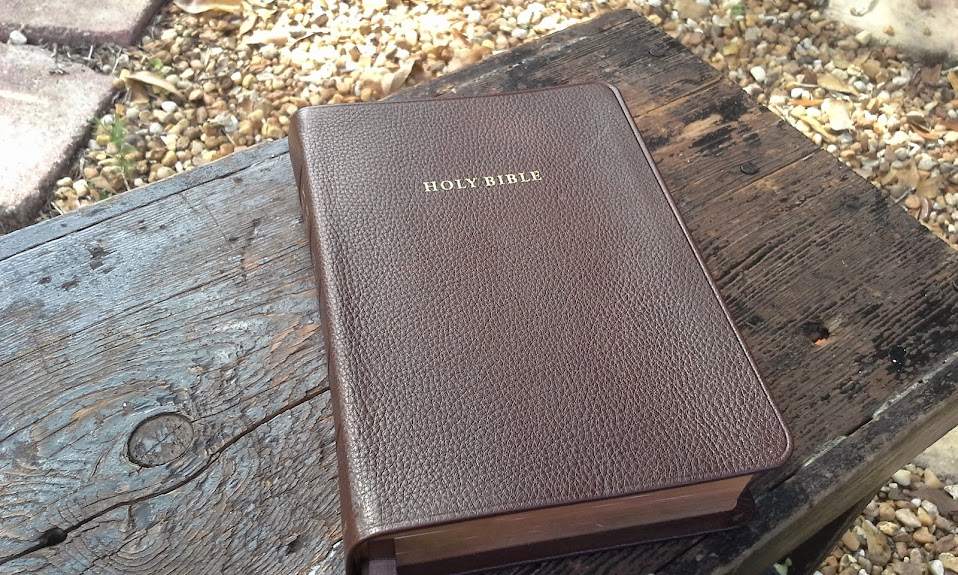
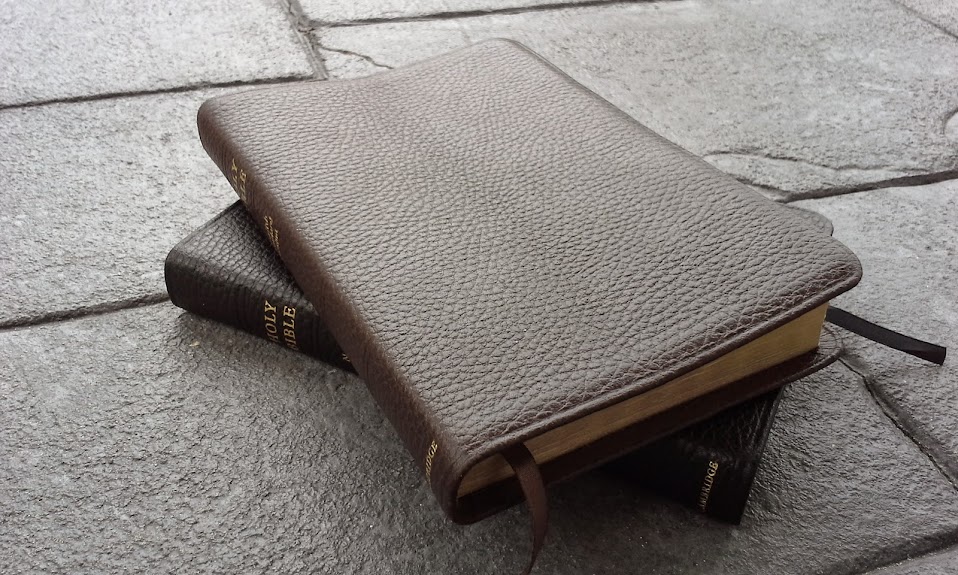

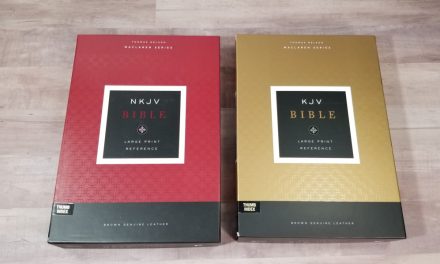
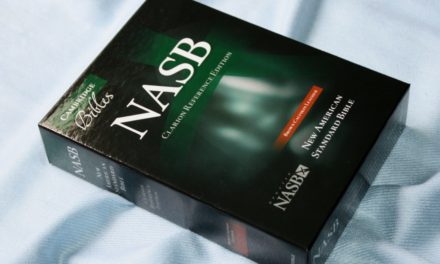
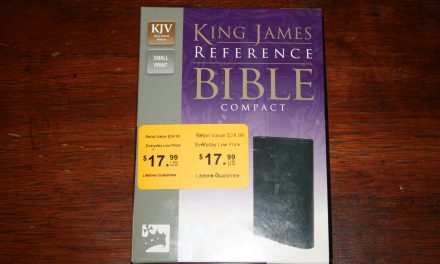
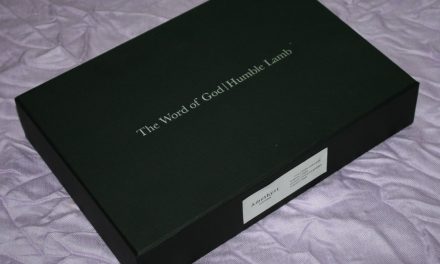





Very nice article; I enjoyed reading it. But one thing stuck out like a sore thumb to me: European quality. Why does it seem it has to be this way? Is there any Bible-maker in the USA that is capable of making a fine-quality Bible on a par with Cambridge?
Dear Gary:
I can’t speak much about domestic quality now, but I know that it was common in the past. My Father’s old bible, bought for him in 1954 was beautifully constructed, it was however from Oxford, I don’t know for sure if it was produced here though it said New York on the flyleaf. In 1970 I bought a bible from Thomas Nelson it was text only, with a calfskin cover to die for. Every thing about this bible was excellent, moreover it was easy to read in almost any light. It was small and easily slipped in a pocket for easy carry. I used it for many years, and it was still beautiful when I gave it to my son a few years ago. The ability and technology is there if folks are willing to pay for it. Domestic publishers seem to have turned to products that are slick and attractive without actually using traditional materials and the skills necessary to work with them. Traditional bibles require high quality materials and the skills necessary to work with them. My observation is that publishers are still pursuing markets for the slick and attractive and cheap types of products. The situation is the same with other products, try to find a Best Quality Double Barrel Shotgun produced domestically, there are not any! We once competed with the best in the world, now we don’t even try. It is a pity, but there it is.
Yours in Christ
Don Denison
Hi Gary. I’ve been trying to think of a US publisher along the quality of Cambridge. One finally came to mind – RR Donnelley and Sons. They printed and bound the Gospel Transformation Study Bible for Crossway: https://biblebuyingguide.com/crossways-gospel-transformation-bible-review/
I’m impressed with their work. I think more publishers should use them.
A group that publishes fine Bibles at their cost in the USA is Local Church Bible Publishers. They have both Cambridge and Oxford (1917 Scofield)text blocks. Good leather without fancy frills: http://localchurchbiblepublishers.com/ .I believe these also are USA: http://www.bpsmilford.org/ and http://purewordsoftruth.com/index.html
Dear Reverend Everhard:
I have enjoyed your reviews, and share many of your values in bible selection. I presently own a Cambridge Bible, a Personal Concord bought to use until I found what I really wanted, I paid $49 and change for it from Evangelical Bible, it has proved to be an excellent bible. I’ve purchased other bibles looking for that perfect one that has the size and size of font for one handed reading, but if the light is good, this little Personal Concord remains the “King of the Lampstand”, it has all the features of the Concord in a smaller size. I have a bible I love, the Westminister Reference Bible, but it it too large for one handed reading for more than a few minutes due to size. I’m ordering a Cambridge Cameo in Vachetta Calfskin in the authorised version that should solve the problem of light levels vs small print. High quality, excellent printing, beautiful and rugged materials, easy to carry, easy to read and in a font large enough to be read even in a dim sanctuary and in the Authorised Translation, what more could one ask for? Hopefully this will be the “one”, Cambridge is the standard against which all other bibles should be compared.
Yours in Christ
Don Denison